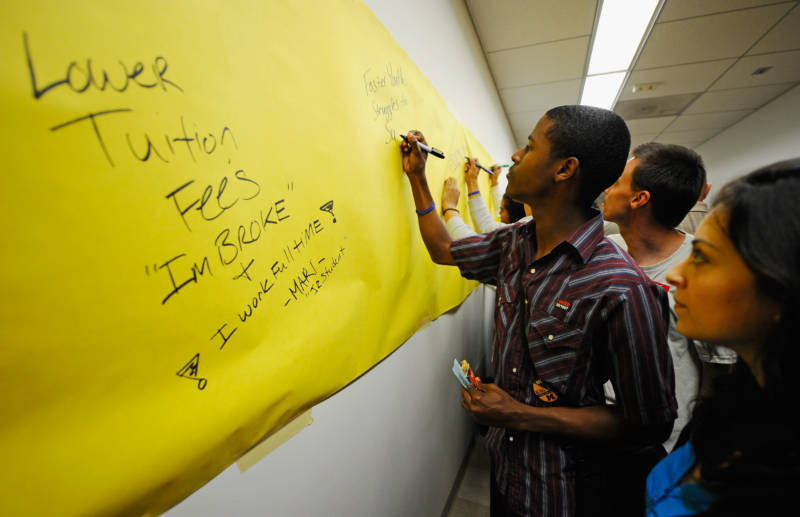White: Two things. One is higher awareness on all of our campuses and the communities that surround the 23 campuses about how important it is to find solutions here. And the second is to find the solutions and create the policies and expectations to enable our students to not have such significant problems with access to food and safe places to live.
Katayama: CSU has already started to study student homelessness on its campuses. Based on what you already know, what could those policies or programs look like?
White: They could look like having [food] pantries required on campuses, perhaps. It could look like making sure that the campuses have a one-page shopping, if you will, for where there are places in the community that also provide similar services. It could take the form of dedicating campuses' resources from one type of another or part of the fundraising activities that campuses do, or the grants that they seek from agencies to creating the funding to support this.
Katayama: Why can't the available college resource centers or staff on school campuses adequately help students now?
White: There's the personnel side, and perhaps some of those good folks can help. But then there's also the supply side of how do we get nutritious food and the ability for students to learn how to prepare that food, and hygiene products and other things that are necessary for their lives -- how do we get the resources to have that? In places that are most successful, those types of supplies are coming often by donations from the community. So, how do we engage community partners to say this matters to us, too?
Katayama: Will you be able to pay for all the programs, or will it depend on fundraising or private funding at each school?
White: I think it will be a combination of all of that -- redirecting existing efforts, if this is a higher priority, engaging the philanthropic community, working with foundations, redirecting resources that are used for something that are no longer quite as necessary. But one of the most powerful things that I've learned about the California State University is the heart and the drive of the people who go to school and who work at the universities. And because this has become known now to be such a significant issue, I think that spirit will go a long ways in finding and making resources and things available.
This interview was edited for length.
